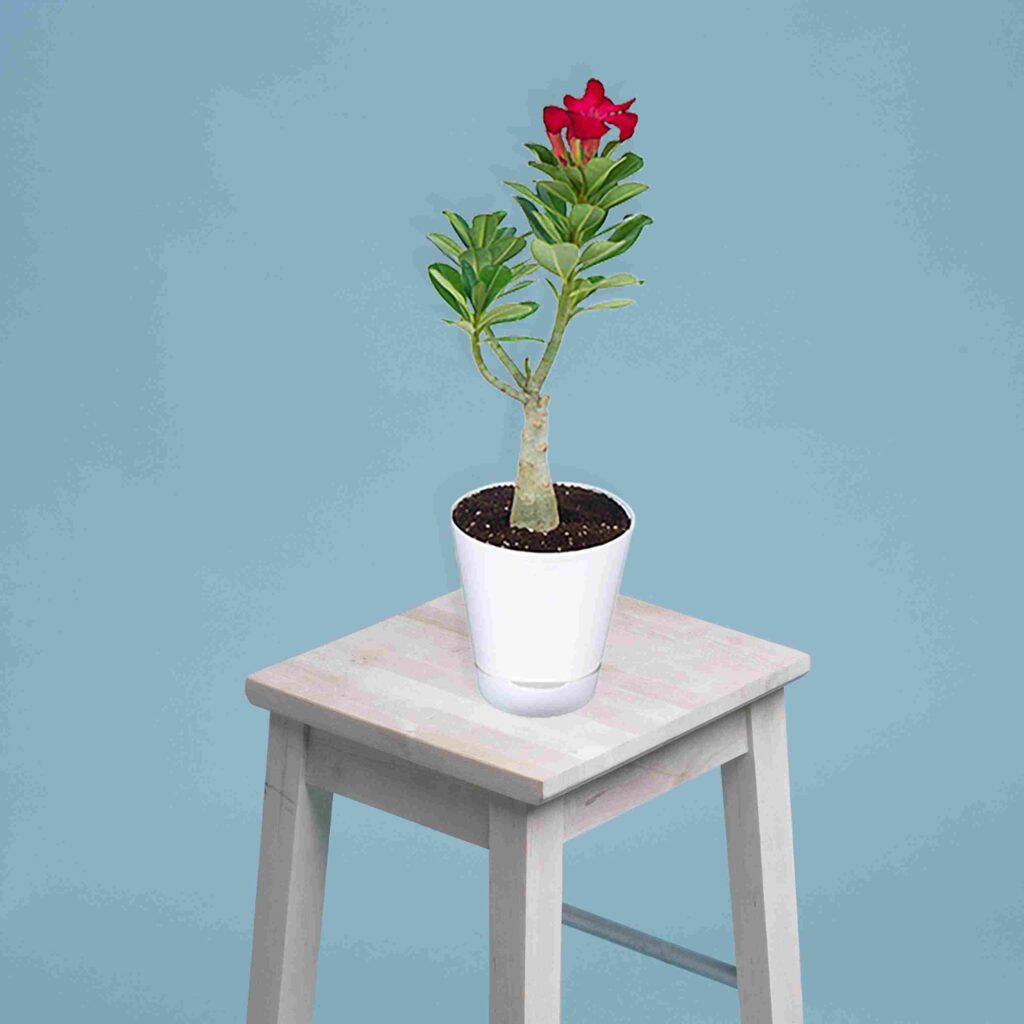

Adenium Bonsai Plant – Desert Rose plant
The desert rose (Adenium Bonsai Plant) is a slow-growing plant, only growing about 12 inches per year. It is often used as a bonsai plant thanks to its thick succulent trunk, thin and delicate leaves, and luscious, deep pink trumpeting flowers. It is native to Africa, the Middle East, and Madagascar. The desert rose is the only Adenium Bonsai Plant extensively hybridized to obtain different flower colors
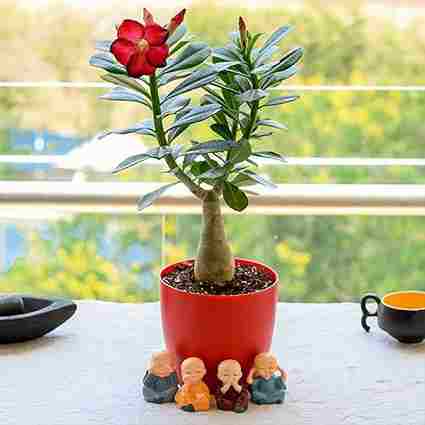

Light & Temperature
Adenium Bonsai Plant is native to tropical regions. In such a climate, Adenium bonsai can be kept outdoors throughout the year. When cultivated in cooler climate conditions, plant can be kept outdoors between the onsets of spring and fall seasons, and indoors during the winter. Adenium thrives well in sunny settings, with a lot of bright light and moderate shade. When grown indoors, it requires sufficient light and, preferably, south-facing windowsill location. To keep the plant safe, it should be never exposed to temperatures below 5 degrees Celsius.
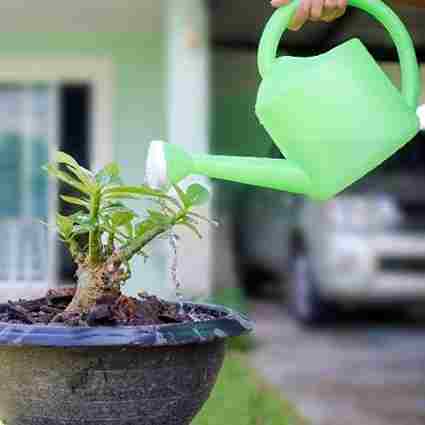

Watering
Adenium Bonsai Plant also requires regular watering. The plant should soak for approximately 30 minutes, and then be given a period of 7 to 10 days to dry, before being watered again. If the plant is placed outdoors, especially during the hot summer months, the soil should be checked regularly. If it is totally dry, the plant should be watered slowly but sufficiently. In winter, if the plant enters its dormant period, watering should be reduced.
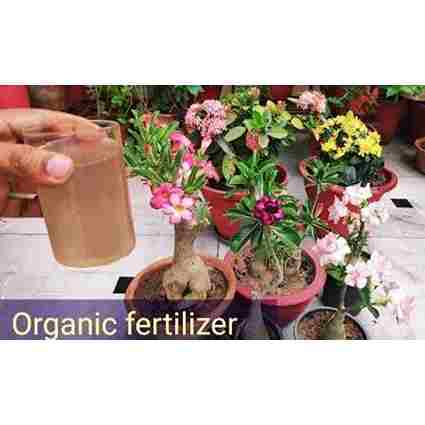

Soil & Fertilization
Adenium Bonsai Plant requires special bonsai soil, made of sand and clay particles, and mixed with organic matter. Such a medium is well-draining, and provides the plant with all the necessary nutrients. For an added dose of nutrients (and potentially more flowers), you can feed your desert rose with liquid fertilizer (diluted by half) once a month during its active growth period. Do not fertilize the plant during its dormant period.


Repotting Adenium Bonsai Plant
Repotting of an Adenium Bonsai Plant should be done during spring, every two to three years. The width of the new pot should not be less than two-thirds of the height of the bonsai plant. Before the plant is transplanted, the old soil around the roots should gently be removed, using a chopstick. Up to a quarter of the root mass should be evenly removed, both from the bottom and the sides. All thick and old roots can should be trimmed. Pot should have one large and smaller drainage holes. Placing sand, stones or moss on the soil’s surface is an excellent way to ensure moisture retention.
Overwintering
Desert rose cannot endure frost or prolonged cold. Once temperatures reach 50 degrees Fahrenheit, the plant will drop its leaves and trigger its slowed dormant phase. Bring the plant indoors, stop watering it, and place it somewhere it will not freeze like a garage or basement that remains above freezing. It will not need care or light until the spring. Once the warmer temperatures return, slowly provide water, place in a window with a sunny exposure, and gradually reintroduce your plant to outdoor life.




Ancient Meaning & Symbolism
The art of bonsai dates back centuries. It’s a highly respected art form and a deeply symbolic, sacred practice with its integral elements of simplicity, harmony, and balance also reflected within many aspects of Japanese culture, and their way of life. Bonsai focuses on growing a single tree in a way that mingles horticulture, art and sculpture and focuses on the ability to slow down and work with nature. The stunning, massive and swollen caudex with its twisting roots above the soil, make the plant a visual treat. Adeniums, especially when grown as bonsai trees, are often compared to dwarf baobab trees. Across South and Southeast Asia, especially the one with larger trunk, it is a strong cultural symbol of abundance, prosperity and good fortune. As a result, they are highly demanded and prized.
Plant Care Tips
- Pruning: Before pruning, use rubbing alcohol or a bleach solution to sterilize your pruning tools; re-sterilize as you move from one plant to the next. Remove cold-damaged growth as soon as new growth emerges. Trim long, lanky stems to balance the stem growth symmetrically. Remove branches that rub or cross other branches, cutting just above a leaf node or where the stem joins with another stem.
- Scale and mealybugs will happily take up residence on the plant, if given the opportunity. A thorough wipe-down of leaves with a dish soap and water solution or insecticidal soap can be effective at stopping them, though repeated applications may be necessary.
- Yellowed or wilting leaves: A common sign of root rot is yellowing leaves or sudden leaf loss. A fungus causes root rot. You will need to remove damaged leaves and stems and unpot the root ball. If you notice any blackened, mushy roots, cut away the damaged roots with a sharp knife. Between cuts, sterilize the knife. Apply a fungicide, according to the package instructions. Replant the remaining roots in a well-draining potting mix.
- Visible spots on leaves: Powdery mildew leaves blister-like marks on the upper leaf surfaces can lead to distorted growth and a white powdery-looking substance on leaves, stems, and buds. Mist the plant leaves and apply a fungicide, according to the instructions on the package. Prune when stems and branches bunch up. Adequate spacing between plants reduces the risk of powdery mildew.




Our Favourable Aspects
- Self-Watering Pot: Excess water gets stored in the reservoir below, the roots then absorb water via capillary action and the plants get water as and when required. It allows you to water less frequently making the plant easy to care for.
- Potting Mixture: It’s a mixture of appropriate amounts of soil, cocopeat & organic vermicompost. Provides best environment to the plant’s roots. It also contains slow-release Fertilizer which gives nutrients to the plants every time it is watered for 6 months.
- Packaging: Plant is secured in a good quality cardboard packaging. Inner Box holds the potted plant in place so that any movement during transit does not affect the plant. Outer box has slits which allow the plant to breathe freely during transit.







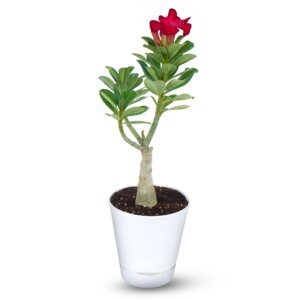
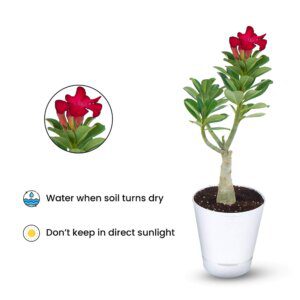

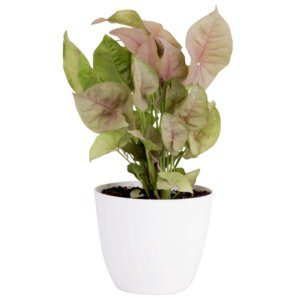

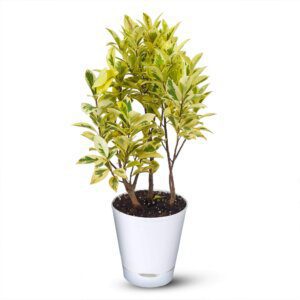
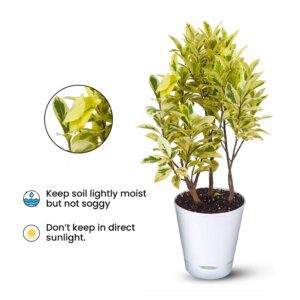
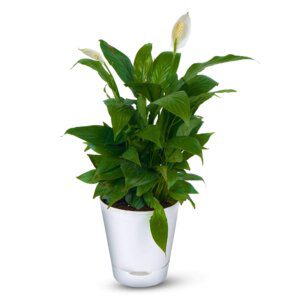
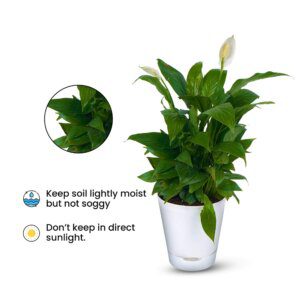
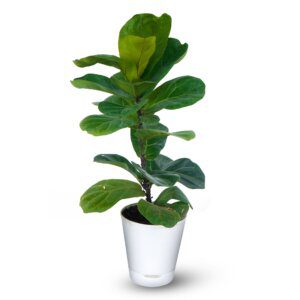

Reviews
There are no reviews yet.